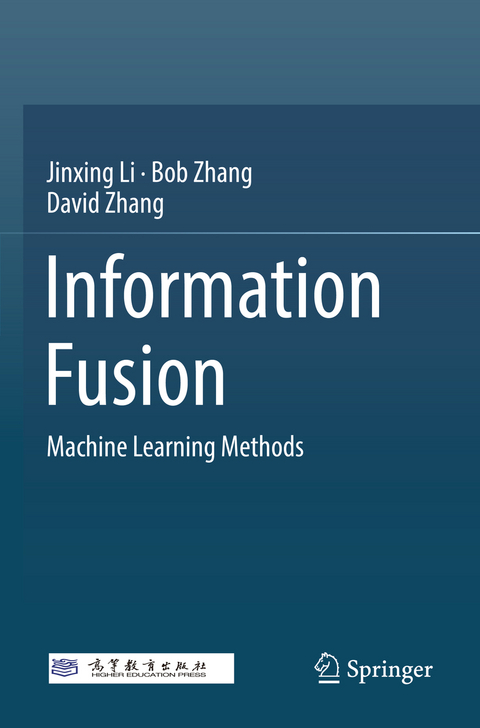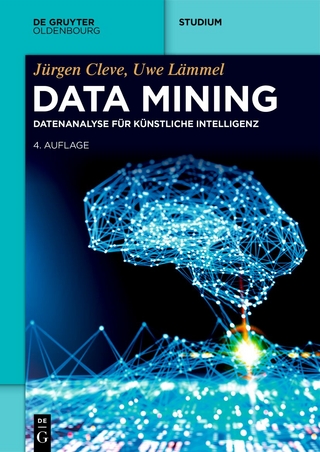
Information Fusion
Springer Verlag, Singapore
978-981-16-8978-9 (ISBN)
This book provides an overview of information fusion technologies, state-of-the-art techniques and their applications. It covers a variety of essential information fusion methods based on different techniques, including sparse/collaborative representation, kernel strategy,Bayesian models, metric learning, weight/classifier methods, and deep learning. The typical applications of these proposed fusion approaches are also presented, including image classification, domain adaptation, disease detection, image restoration, etc.
This book will benefit all researchers, professionals and graduate students in the fields of computer vision, pattern recognition, biometrics applications, etc. Furthermore, it offers a valuable resource for interdisciplinary research.
Jinxing Li received his BSc degree from the Department of Automation, Hangzhou Dianzi University, Hangzhou, China, in 2012, his MSc degree from the Department of Automation, Chongqing University, China, in 2015, and his PhD from the Department of Computing, Hong Kong Polytechnic University, in 2018. His research interests include pattern recognition, medical biometrics and machine learning. Bob Zhang received the PhD degree in electrical and computer engineering from the University of Waterloo in 2011. After graduating, he was a postdoctoral researcher in the Department of Electrical and Computer Engineering, Carnegie Mellon University, Pittsburgh, PA, USA. He is currently an Associate Professor in the Department of Computer and Information Science, University of Macau. His research interests focus on biometrics, pattern recognition, and image processing. Dr. Zhang is a Senior Member of IEEE, a Technical Committee Member of the IEEE Systems, Man, and Cybernetics Society and an Associate Editor of Artificial Intelligence Review. David Zhang graduated with a degree in Computer Science from Peking University. He received his MSc and his PhD (both in Computer Science) from the Harbin Institute of Technology (HIT) in 1982 and 1985, respectively. From 1986 to 1988, he was a Postdoctoral Fellow at Tsinghua University and then an Associate Professor at the Chinese Academy of Sciences, Beijing. In 1994, he received his second PhD in Electrical and Computer Engineering, from the University of Waterloo, Ontario, Canada. Currently, he is a Chair Professor at Hong Kong Polytechnic University, where he has been the Founding Director of the Biometrics Research Centre (UGC/CRC) supported by the Hong Kong SAR Government since 1998. He also serves as a Visiting Chair Professor at Tsinghua University and the HIT and as an Adjunct Professor at Shanghai Jiao Tong University, Peking University, National University of Defense Technology and the University of Waterloo. He is the Founder and Editor-in-Chief of the International Journal of Image and Graphics (IJIG); a Book Editor for the Springer International Series on Biometrics (KISB); and an Associate Editor for more than ten international journals, e.g., IEEE Transactions. He has published over 20 monographs and 400 international journal papers and holds 40 patents from the USA/Japan/China. He was continuously listed as a Highly Cited Researcher in Engineering by Clarivate Analytics (formerly known as Thomson Reuters) in 2014, 2015, 2016, 2017 and 2018. Professor Zhang is a Croucher Senior Research Fellow, Distinguished Speaker of the IEEE Computer Society, and a Fellow of both the IEEE and IAPR.
Chapter 1. Introduction.- Chapter 2. Information fusion based on sparse/collaborative representation.- Chapter 3. Information fusion based on gaussian process latent variable model.- Chapter 4. Information fusion based on multi-view and multifeature earning.- Chapter 5. Information fusion based on metric learning.- Chapter 6. Information fusion based on score/weight classifier fusion.- Chapter 7. Information fusion based on deep learning.- Chapter 8. Conclusion.
| Erscheinungsdatum | 08.07.2023 |
|---|---|
| Zusatzinfo | 1 Illustrations, black and white; XXVI, 260 p. 1 illus. |
| Verlagsort | Singapore |
| Sprache | englisch |
| Maße | 155 x 235 mm |
| Themenwelt | Informatik ► Datenbanken ► Data Warehouse / Data Mining |
| Informatik ► Grafik / Design ► Digitale Bildverarbeitung | |
| Informatik ► Theorie / Studium ► Künstliche Intelligenz / Robotik | |
| Schlagworte | Classifier Fusion • Collaborative Representation • data fusion • Deep learning • Information Fusion • Kernel • metric learning • Multi-feature data • Multi-modal data • Multi-view Data • Multi-view learning • Sparse Representation • Weight Fusion |
| ISBN-10 | 981-16-8978-4 / 9811689784 |
| ISBN-13 | 978-981-16-8978-9 / 9789811689789 |
| Zustand | Neuware |
| Informationen gemäß Produktsicherheitsverordnung (GPSR) | |
| Haben Sie eine Frage zum Produkt? |
aus dem Bereich


